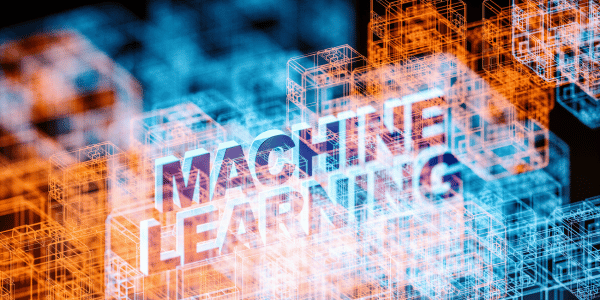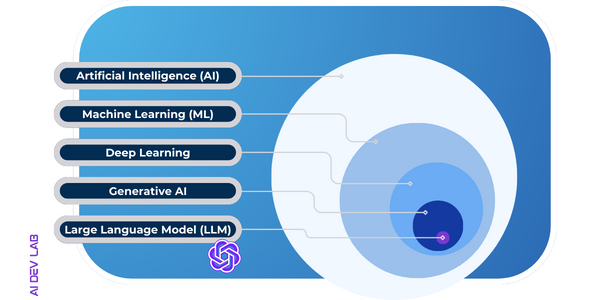Address
304 North Cardinal St.
Dorchester Center, MA 02124
Work Hours
Monday to Friday: 7AM - 7PM
Weekend: 10AM - 5PM
Address
304 North Cardinal St.
Dorchester Center, MA 02124
Work Hours
Monday to Friday: 7AM - 7PM
Weekend: 10AM - 5PM

In the ceaseless torrent of technological advancement, machine learning is the current carrying us forward. It’s a trailblazer, fuelling innovations from autonomous vehicles to advanced healthcare diagnostics. In this exhaustive guide, we’ll dive headfirst into ‘What is machine learning?’ We’ll discuss the basics, traverse its different types, and illustrate why this technology is remolding businesses all around the world.
At its core, machine learning is a branch of artificial intelligence. It’s all about empowering computers to learn and evolve through experience. And to do this without explicit programming. The crux of machine learning is to develop sophisticated algorithms that allow computers to identify patterns, make predictions, and decisions leveraging data. It’s often abbreviated as ML.
So, what is machine learning in simple terms?
Think of machine learning as teaching a child to recognize animals. You show them several pictures of dogs, and eventually, they start identifying dogs in other images or in real life.
Teaching a child to recognize a dog is much like how machine learning works.

Let’s demystify this intriguing concept a bit. Nestled within the expansive domain of artificial intelligence, machine learning is a dynamic process wherein a computer system learns from past experiences or, to be precise, past input data. It draws insights, analyzes patterns, and leverages that learning to make astute future predictions.
The following graphic gives a visual of how machine learning fits into the AI universe.

The fascinating part is that the performance of this system rivals human intellect and often exceeds it.
To help you picture this, consider another everyday scenario: teaching a child to identify different fruits. First, you present the child with images of various fruits and say the names of the fruits. Next, you continue pointing out fruits and repeating the names. Over time, the child doesn’t just recognize the fruits you’ve shown but starts identifying new ones independently.
The process is much like the workings of ML. Except here, the subject is a sophisticated computer system that deals with vast amounts of data. Furthermore, it uses meticulously designed algorithms. Quite the automation AI, isn’t it?
Machine learning is broadly classified into three categories: supervised learning, unsupervised learning, and reinforcement learning. Each of these categories has its unique methods and applications, often seen in the working of an AI in business or other fields.
Supervised learning is guiding a computer to learn. Like a student guided by a teacher, supervised learning involves training a model using labeled data. If you’re wondering about an example of ML, think about email spam filters that are trained with examples of spam and non-spam emails.
Also, training a model on labeled data is similar to teaching a child different animal names using flashcards. The child learns to associate images with names, just like the model learns from input-output pairs to make future predictions or classify new data points. This is what supervised learning entails.

Another way to use ML is to let the machine discover hidden patterns. Think of it as an explorer unearthing hidden treasures within the data without any specific guidance.
Now, let’s assume you present a child with a bunch of different toys without any labels. The child starts grouping them based on similarities—cars in one place and dolls in another. This is akin to unsupervised learning, where the algorithm finds patterns or structures in unlabeled data.
A common application? E-commerce websites recommend products based on your browsing history and preferences.
Finally, there’s reinforcement learning. It is a bit like supervised training, but in this case, feedback is provided. Think of it as training a pet. The agent is rewarded or punished based on its actions, encouraging it to learn the best behavior. If your dog sits, he gets a treat.
The main idea here is learning through trial and error.
Continue reading about the types of machine learning.
Essentially, ML is driven by powerful algorithms that breathe life into it. Algorithms form the backbone of machine learning, providing the necessary structure and guidance for data interpretation.
Algorithms are like the variety of teaching methods used to educate a child. From linear regression, which predicts output based on data, to decision trees that model decisions and their possible consequences, these algorithms are the building blocks of ML models.
Neural networks, inspired by human brain connections, are another type of algorithm used extensively. They can learn and improve over time and mimic the way our brains process information.
Each algorithm in the repertoire serves a unique purpose, and their operation varies significantly. Just like different teaching methods are effective for different subjects or students, each algorithm shines when applied in the right context to identify patterns and relationships in the data.
We can’t talk about machine learning without talking about the indispensable role of data. In the realm of teaching machines, data is the fuel that powers the journey of discovery and understanding. It’s the cornerstone that everything is built upon.
The quality and quantity of the data fed into a model directly impact the accuracy of its predictions. High-quality, diverse data sets can help the model identify complex patterns and make more accurate predictions. Conversely, inaccurate or biased data can lead to flawed predictions.
Good data is clean, well-organized, and free of irrelevant information. It’s the unsung hero behind successful models. The mantra here is simple: the better the data, the more reliable the results. You can delve deeper into this subject in our blog about AI and big data.

Just like humans, models learn from experience, and they gain that experience through a process called training. This rigorous process involves teaching the model to make accurate predictions when exposed to new, unseen data.
Training a model is similar to an athlete’s preparation for a marathon. The athlete trains intensively, running miles each day, pushing their limits, and gradually building endurance and speed. They constantly test their abilities, adjusting their training regimen based on performance until they’re ready for the main event.
In the machine learning context, the model is the athlete. It is trained using a vast amount of data, learning to identify patterns and make predictions. This training data is split into two sets: one for training and the other for validation. The model learns from the training set and then tests its learned knowledge on the validation set.
The model iteratively learns from its errors, tweaking its parameters to improve accuracy. Over time, just like the athlete, the model builds its ‘stamina’—the ability to make accurate predictions, effectively turning raw data into actionable insights. This cycle continues until the model’s performance reaches an acceptable level and it is ready to be deployed.
The performance of the model is then tested on a separate set of data (test data), much like the athlete finally running the actual marathon. This final evaluation provides a clear picture of how the model might perform in a real-world scenario, ensuring it’s fit for the task at hand.
Remember, a well-trained model is a powerful tool, capable of making high-quality predictions that can drive effective decision-making.
The future looks promising with advancements in deep learning, integration of ML with other tech like natural language processing, and more.
So, what’s the difference between machine learning and AI?
AI is the broader concept of machines capable of carrying out tasks in a way that we would consider “smart.” On the other hand, machine learning is a current application of AI. It involves the creation of algorithms that allow machines to learn from data.
Learn more about what is artificial intelligence.
Whether you’re a tech giant, a start-up, or an individual interested in coding, it has something to offer everyone. With the potential to revolutionize industries and lives, it’s not just about understanding the machine learning definition and examples. It’s about harnessing this power and effectively.
Now that you have a basic introduction, are you ready to dive head-first into this fascinating world? Remember, the future of technology isn’t just about machines. It’s about the humans who teach them how to learn!
Ignoring it could be the biggest business mistake you make!